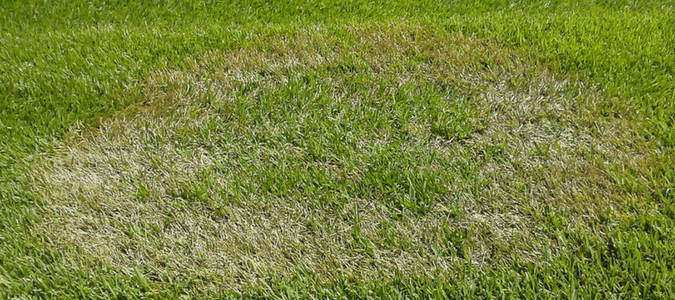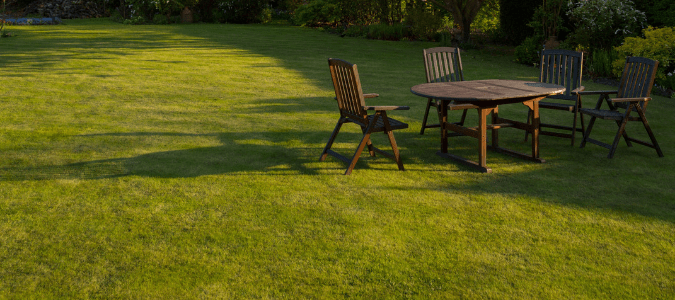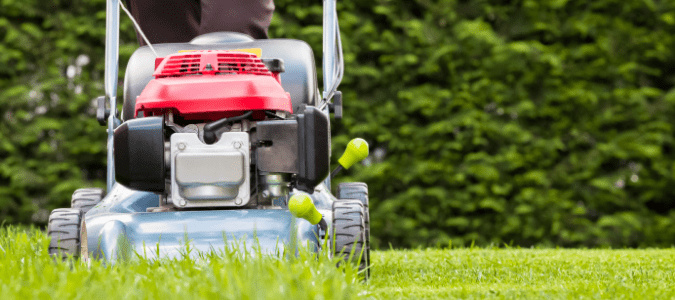Many types of grass go through seasons when they are greener and others when they are brown and dormant. Zoysia grass is a versatile type of grass that homeowners can use in a variety of different climates and soils. This means that while zoysia grass will usually go dormant in drier and cooler periods, it should perk up again when seasons change.
However, if you have zoysia grass and your lawn has turned completely brown, has some dead spots or is starting to thin out, then you might have a problem. Here are some of the most common issues homeowners with zoysia grass may come across.
Fungal Diseases
Zoysia grass is typically less vulnerable to diseases than some other types of grass. However, it can sometimes fall prey to fungal diseases like “large patch.” This kind of disease is most common in the spring, but it can also happen in the fall when grass isn’t growing as quickly due to cooler temperatures. It can also pop up during floods or periods of high rainfall.
This disease looks just like its name—it produces large patches of brown grass or sometimes turns large areas of grass a bright orange color. The size of these patches can range from just a few inches to several feet in diameter.
Pest Damage
Unfortunately, there are several types of pests that love to chomp on zoysia grass, including chinch bugs and hunting billbugs. The most common type of problem-causing pest for this kind of grass is chinch bugs. Adult chinch bugs are less than a quarter-inch long, and they have wings as well as a black triangle in their shoulder area.
Chinch bugs damage grass by sucking out juice from the blades and injecting a poison that causes the grass to wilt. They are most common during the summer and the hottest and driest seasons of the year. Damage from chinch bugs can be easy to mistake for drought damage because it involves large, solid areas of brown grass.
These pests usually start their carnage on the edges of the lawn—especially near concrete sidewalks or driveways. Then, they move towards the middle. One easy way to figure out whether you might have chinch bugs is to pull up an area of damaged grass on the edge of your lawn. Look to see if there are any fast-moving bugs running to a hiding spot. These little black pests are likely chinch bugs and could be the reason your grass doesn’t look so great.
On the other hand, hunting billbugs can be more difficult to detect. Like chinch bugs, hunting billbugs can leave behind wreckage that looks like drought damage. However, they become active in early summer and do most of their work at night or early morning. At around half an inch, hunting billbugs are slightly larger than chinch bugs. Billbugs are a reddish brown-black color and have a curved snout. Adult hunting billbugs can overwinter in your lawn and then lay their eggs in mid to late spring once the weather starts to warm up.
Other kinds of critters that can damage zoysia grass include moles, mice, gophers and rabbits. These animals can disrupt grass by digging tunnels, pulling up grass to look for food or wearing a path in your lawn. However, as opposed to contacting a lawn care specialist for help, you’ll likely have to contact a rodent or wildlife control specialist.
Improper Maintenance
While zoysia grass is relatively hardy, it’s still possible to kill it or damage it if you aren’t careful. For instance, zoysia grass doesn’t do well in standing water. This means that if you overwater your lawn or have areas where water gathers, then parts of your lawn might start to turn brown due to root rot or disease. On the other hand, zoysia grass can also suffer from too little water. If your lawn has slopes in sunny areas, then water might run off and grass might not get the moisture it needs.
Similarly, if you apply too much fertilizer, this can lead to longer-term problems. Applying too much fertilizer can change the pH level of your soil and can lead to yellow spots in your grass. To make matters worse, too much fertilizer can also make grass more susceptible to pests and diseases. Of course, zoysia grass can also start to brown out if it doesn’t have enough nutrients, such as nitrogen and iron.
Another common maintenance issue is improper mowing. If you cut your grass too short, this can expose the bottom of the grass to too much sun and cause your grass to die or wilt. It’s best to only mow zoysia grass around every five to ten days and avoid cutting it much shorter than one to two inches. Mowing with a dull blade can also make your grass look bad by fraying grass blades and exposing brownish parts of the grass.
Sometimes, it can seem like your grass is just dormant when it is actually dead. And, in some cases, what looks like one type of lawn condition could actually be something else. That’s why it is usually easiest to reach out to a lawn care specialist when you’re having problems with your zoysia grass.
Lawn care professionals have the training and knowledge to troubleshoot different grass problems. Then, they can give you suggestions on what to do next. A lawn expert can also save you time and stress by taking on all the labor and time of keeping your lawn healthy year-round, so you don’t have to deal with it.
What About Zoysia Grass Shade Tolerance?
While zoysia grass can typically do well in light or occasional shade, it does not like heavily shaded areas. If parts of your lawn are under heavy shade, then this grass will start to thin out and will never grow as green and full as it does in the sun. You might be able to help the shaded grass a bit by watering it more often. However, if you try this method, it is essential to watch for standing water and avoid overwatering. Overwatering can increase the chance of disease in zoysia grass.
It can be difficult to care for any type of grass in the shade if you try to tackle this problem on your own. But, a lawn specialist can help keep your lawn healthy. Lawn professionals have the education and experience to understand what grass needs whether in shaded areas or in the sun. They can help figure out the best way to keep your lawn healthy.
Beyond shade, lawn pros know that drought and heat can also distress your lawn. They have the tools and skills to keep your lawn green, even in the summer heat. Zoysia grass holds up much better in high temperatures and drought conditions than many other kinds of grass, but it can only take so much. If a major drought occurs and you can’t water your lawn properly, this kind of grass might go dormant and start to look like straw, or it could die off altogether. No matter the conditions in your yard, a lawn specialist can help take care of all your lawn care needs for you.
How to Repair Zoysia Grass
If your zoysia grass has turned brown, you don’t need to panic right away. This is a relatively resilient type of grass, so it’s possible that your lawn has gone dormant instead of completely dying off.
Typically, the best way to repair zoysia grass is by putting it on a good lawn care schedule. This may include:
- Mowing weekly and cutting it at a one to two-inch height. When mowing, never cut more than a third off the top of the grass blades.
- Giving your lawn half an inch to an inch of water a week, unless there is rainfall.
- Aerating the lawn in the spring to help nutrients and water reach the roots.
- Dethatching on a periodic basis.
- Fertilizing with half a pound to a pound of nitrogen fertilizer per every 1,000 square feet at a time, taking care not to apply more than three pounds of fertilizer per 1,000 square feet every year.
Typically, it’s helpful to identify the problem before trying to rehabilitate your grass. Since many different zoysia grass issues can look alike, it’s often difficult for homeowners to diagnose and treat lawn issues on their own. Because of this, the easiest way to “fix” grass and prevent future problems is to hire a lawn care professional.
A pro can inspect your lawn and determine if your zoysia grass needs help or if it’s just going through a normal dormant period. If your grass is having problems, a lawn specialist can also help figure out whether it might be possible to rehabilitate your lawn through methods like changing the level of water or fertilizer you’re using. They can treat these problems and help you set up a good lawn maintenance routine to help prevent some of these issues in the future.
Unfortunately, it might also be possible that your grass is completely dead. In this case, you might need to pull out the entire lawn and get well-versed on the best time to plant zoysia grass. Or, if only parts of your lawn are dead, you might have to replace just a few areas of sod. The easiest way to tackle this project is to contact a lawn professional. These pros have the tools and training needed to make your lawn healthy.
ABC Can Repair and Maintain Your Zoysia Grass
Diagnosing problems with your zoysia grass is difficult. Then, there’s the added difficulty of figuring out the best way to treat the problem. Instead of playing a guessing game with your grass, contact ABC Home & Commercial Services. Our lawn care professionals can diagnose what is wrong with your lawn and then come up with a lawn care plan to keep your grass healthy and green.



